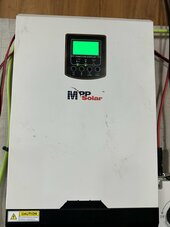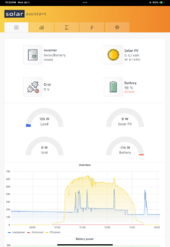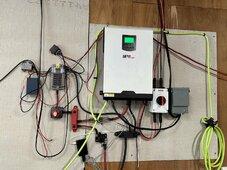
D

https://www.epochbatteries.com/

All in one hook up into existing RV
- Thread starterDirt2dad
- Start dateMonday at 9:29 PM

Unwatch
•••
D
Dirt2dad
New Member
To anyone who may be able to help me with installing an MPP All in one into my RV, using the existing system. I've looked through quite a few threads, different concerns and schematics. Looking for any advice or schematics/scenarios that someone may have used and has had success with.So you have an understanding as to what I'm planning.
MPP Solar 1012LV-MS (need to buy)
(2) Deep cycle 105 amp/hr in parallel (currently installed)
310W single solar panel (already have)
So I've been researching, while reading William Prowse -Mobile Solar Power book. I intend to wire my AIO as follows.
•Battery +/- with 4 awg wire to bus bars. •Inline 100 amp fuse off battery +(recommend style?)
•Bus bars to DC +/- on AIO.
•Shore power RV plug from from RV panel to AIO AC in.
•AIO AC out to RV AC panel
•Solar panel into solar panel port
That all being said, I have a few questions.
1. How do I determine wire size from bus bar to the DC fuse panel? And how to determine inline fuse size?
2. How to determine if I need and what size fuse on the "line" wire from the shore power?
3. Do you need an inline fuse on the positive wire from the solar panel hooking into the AIO? MC4 Inline fuse? If so, how to determine fuse?
4. Should I be adding a fuse between the AIO AC out to RV AC panel or can I just use the "main" breaker in my existing RV panel?
5. Do I need to add a ground from bus bar negative to RV trailer frame? How about adding the ground from AC panel to trailer frame?
I have run all the calculations as to what we use and what we need. We only use what we need, otherwise we're outside endlessly. My calculations get me to 923.8 WA, I rounded to 1000, and that's with my calculations being at their extremes. The photos are to illustrate what equipment I have, I have no intentions to run the large appliances unless hooked up to shore power, I setup an outdoor kitchen and cook with propane.
Thanks in advance for any help offered, or recommendations. I am new to this solar stuff, and the AIO will allow me just what I need for the little AC I'm looking for.
Last edited:


